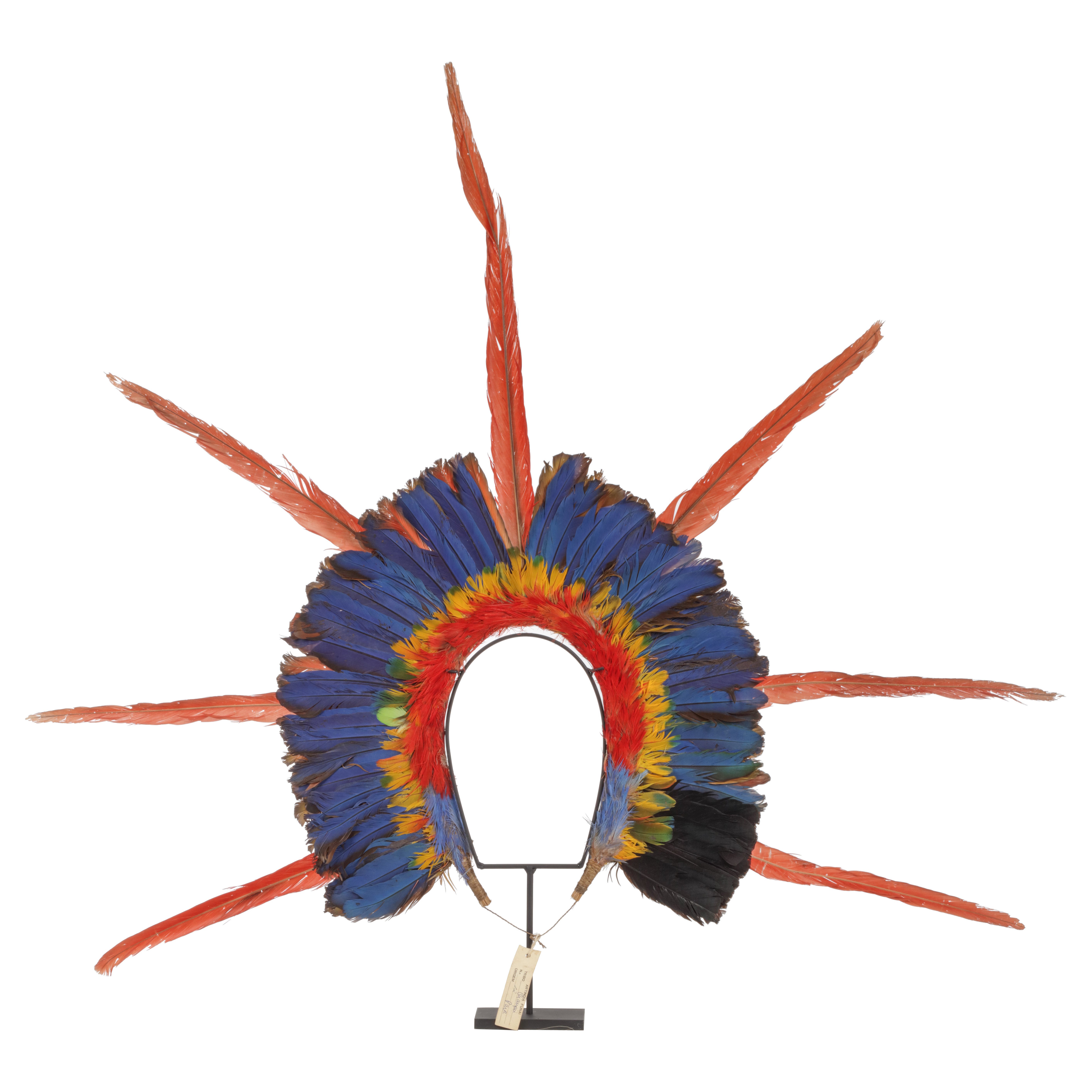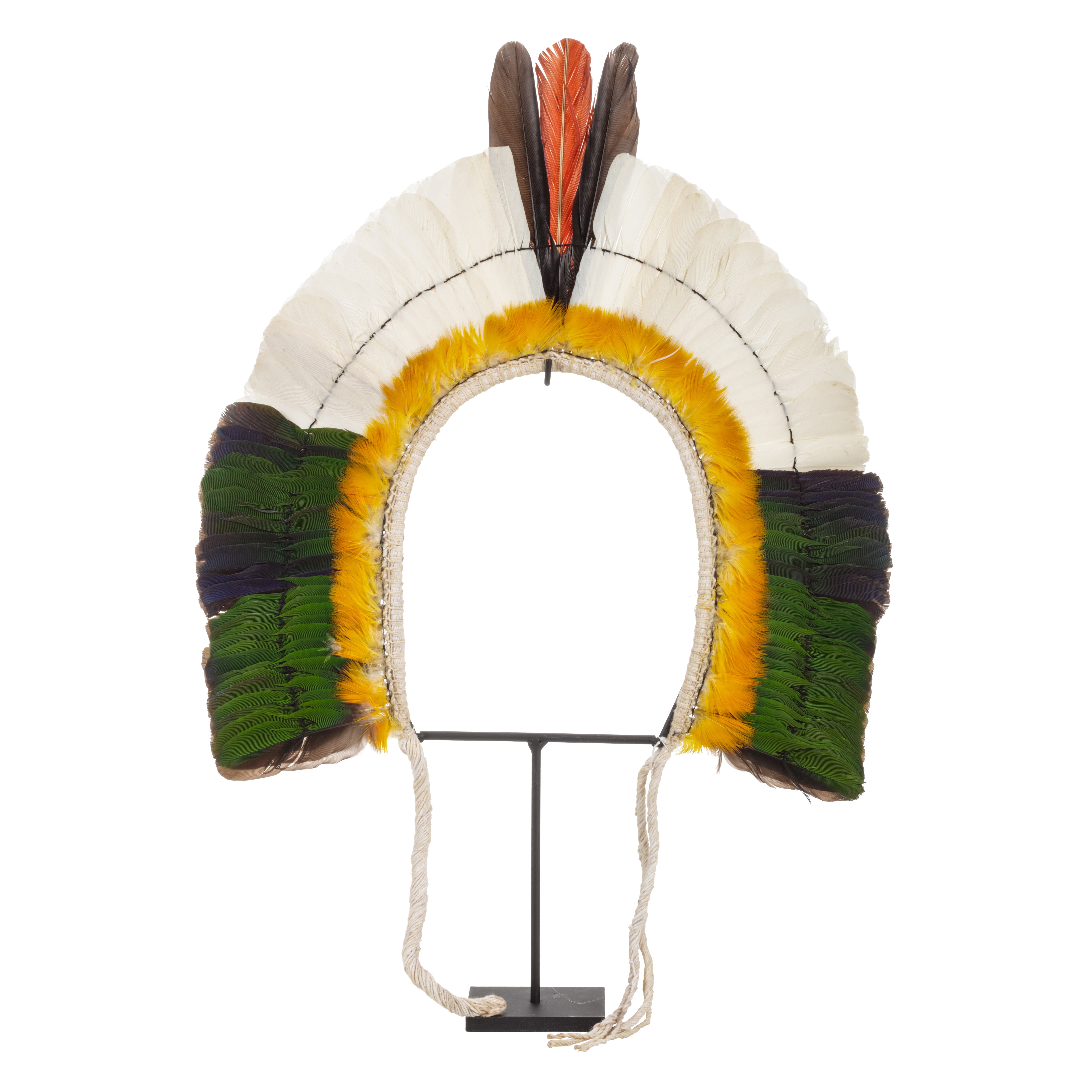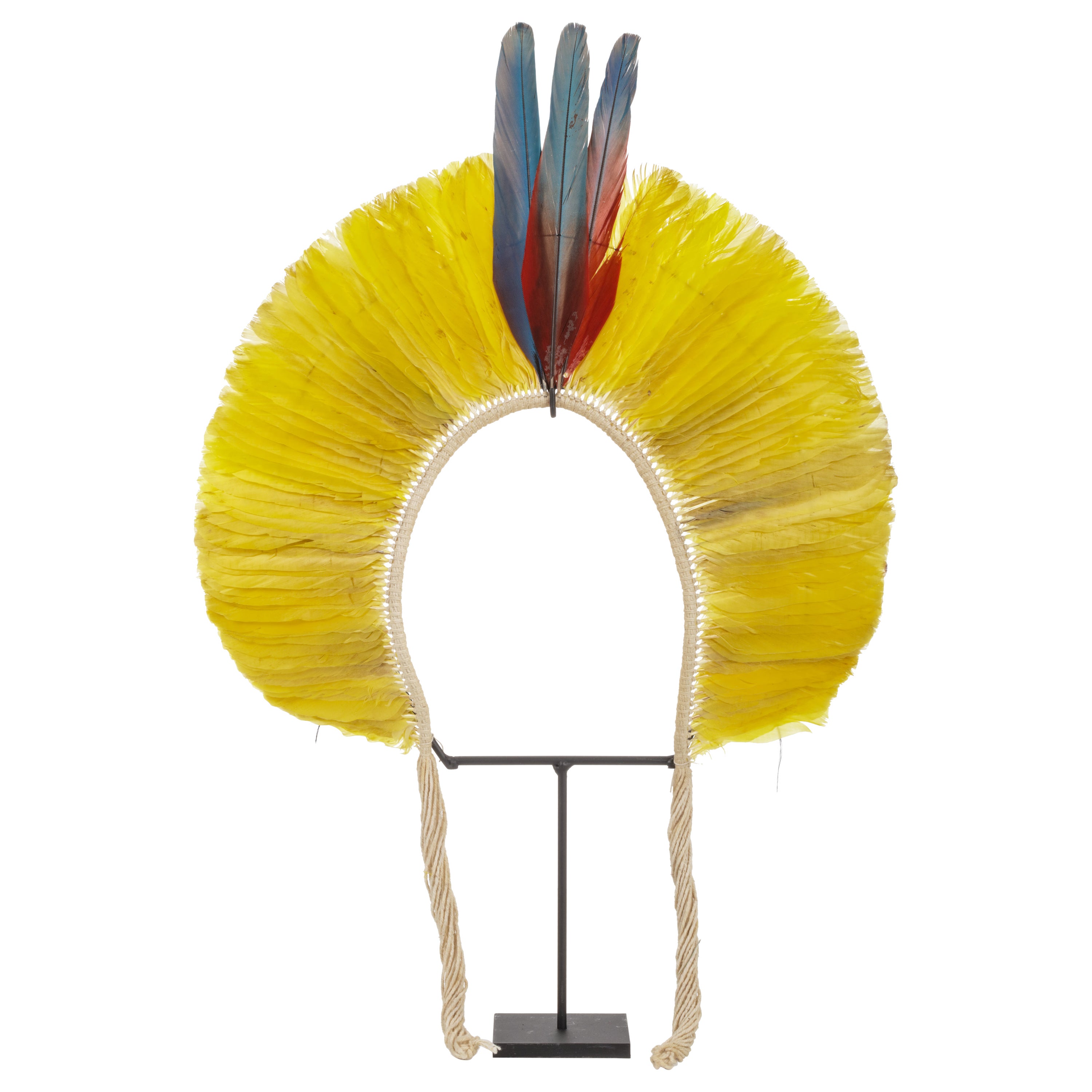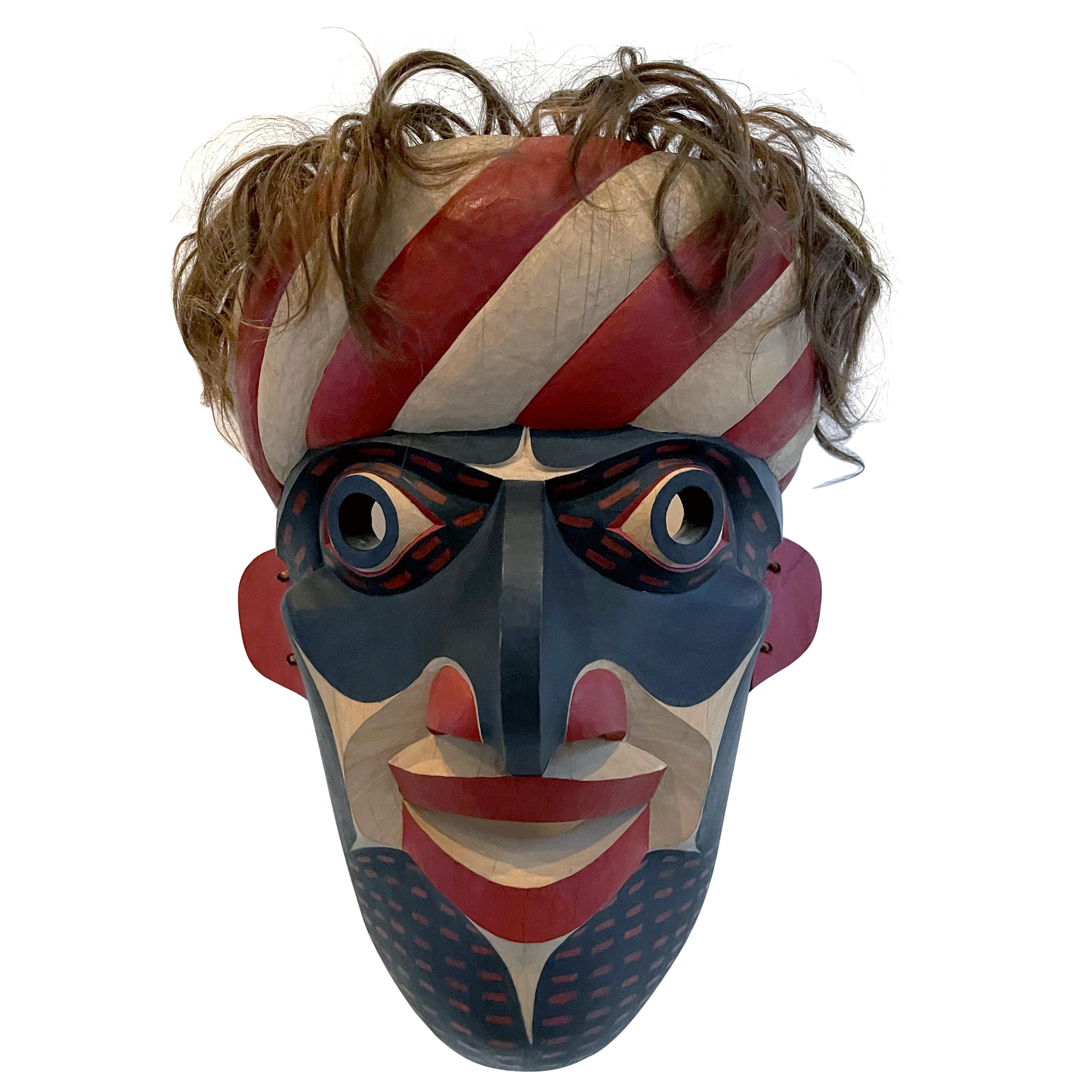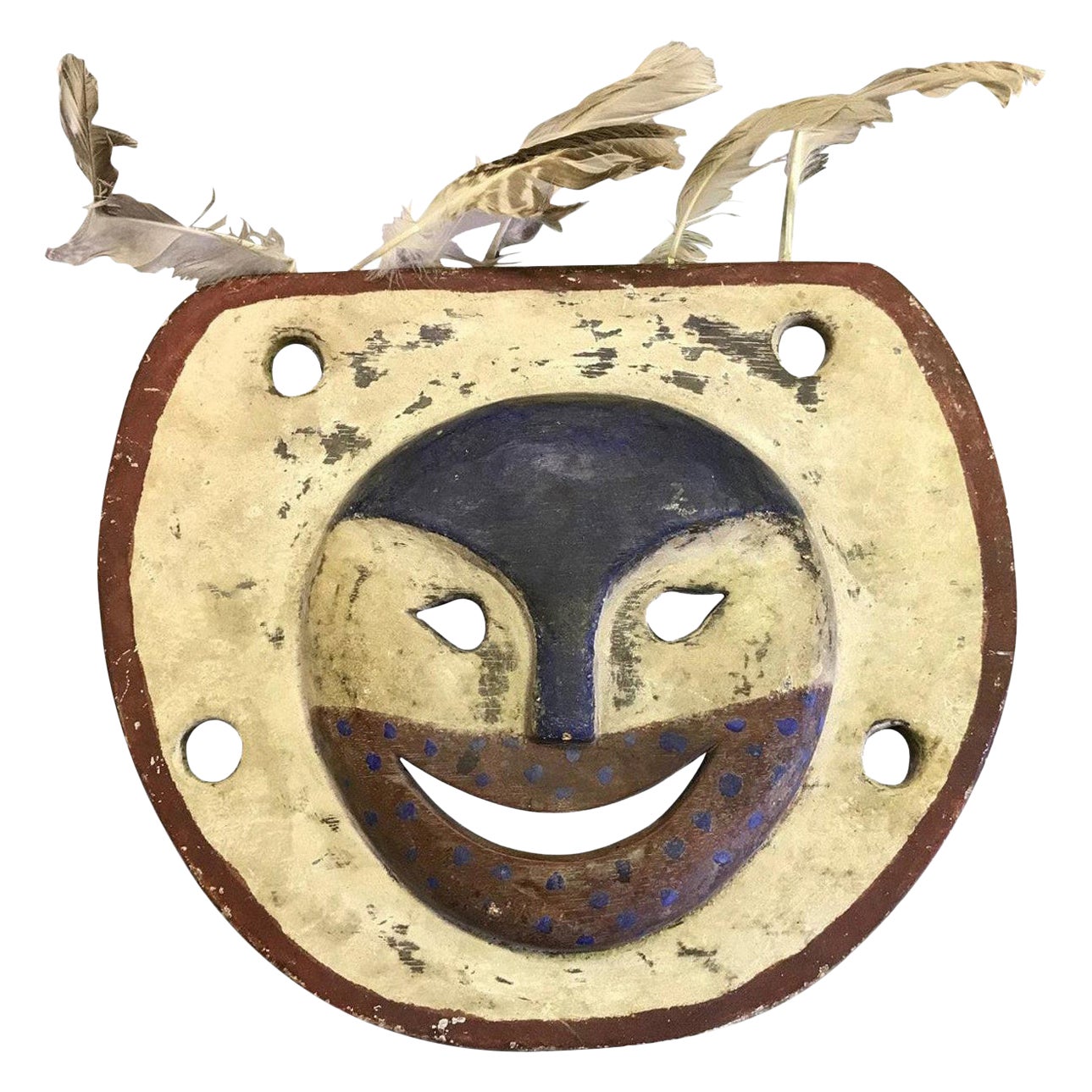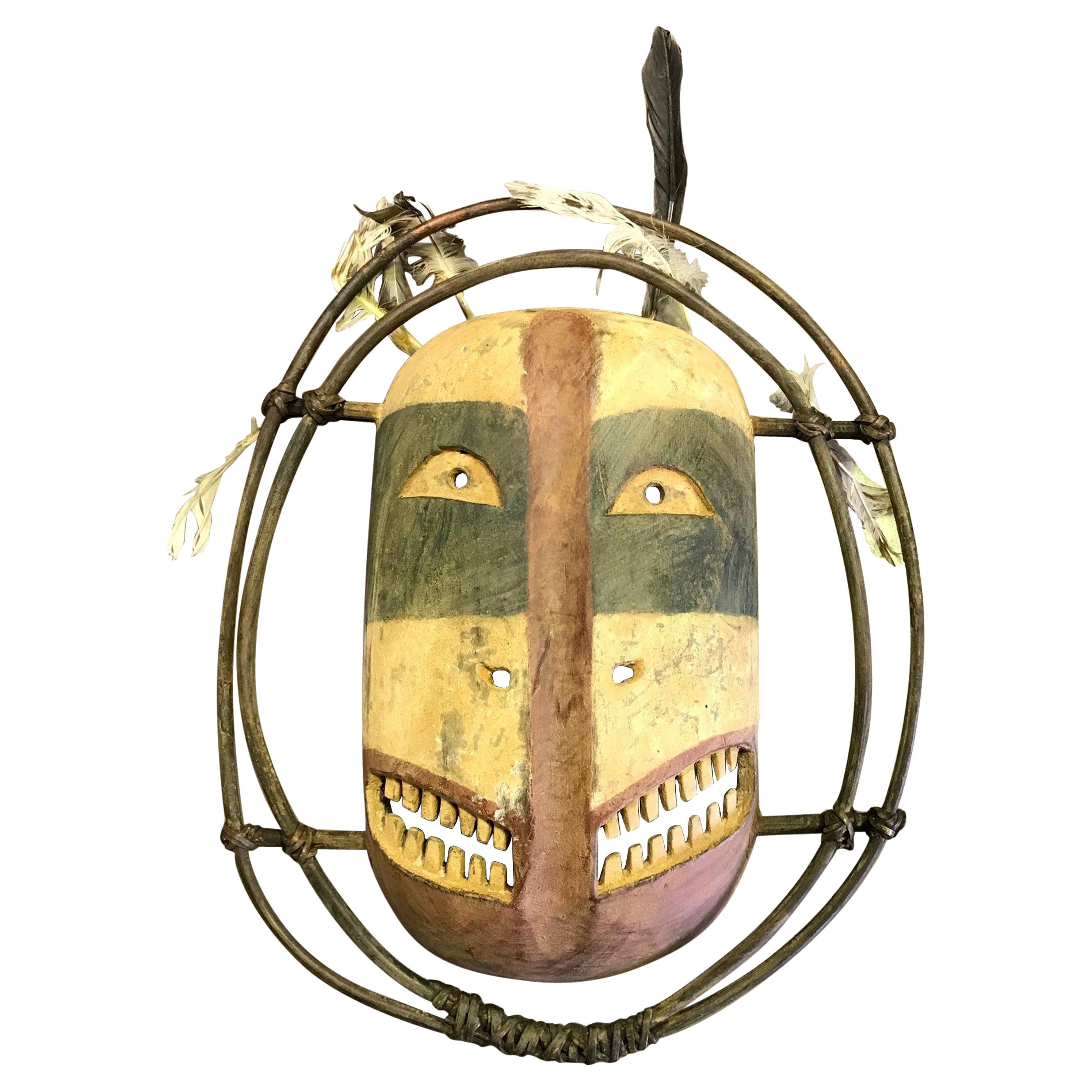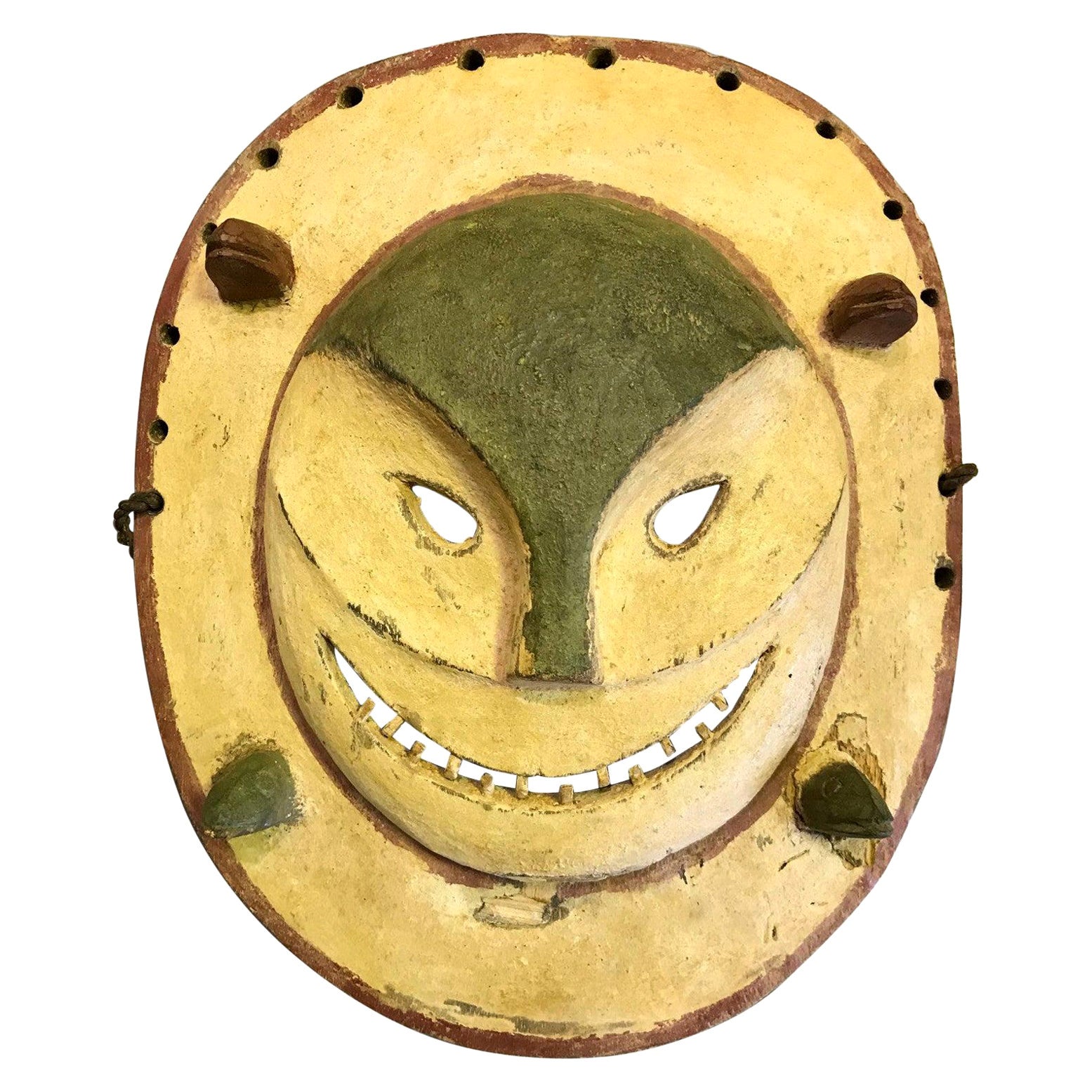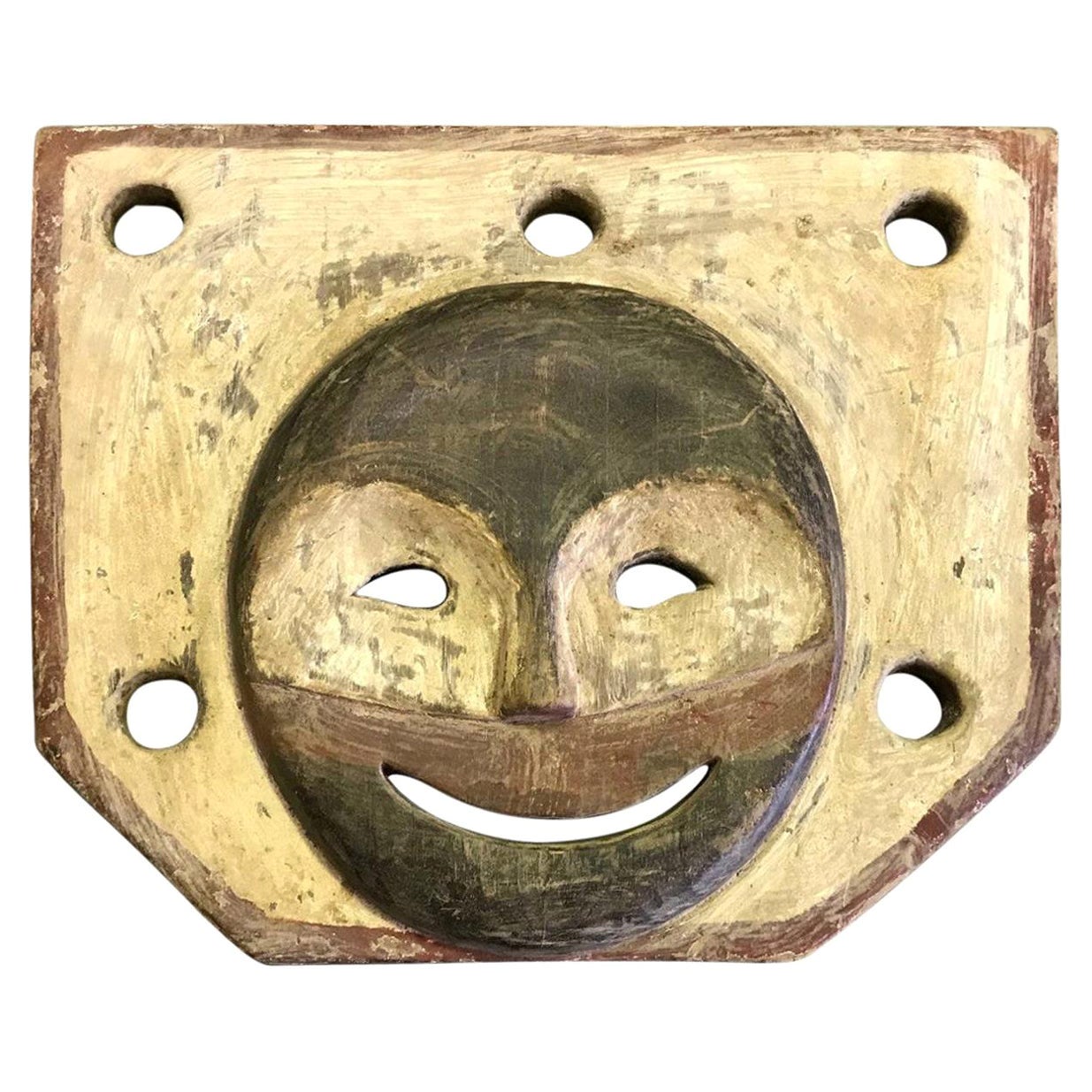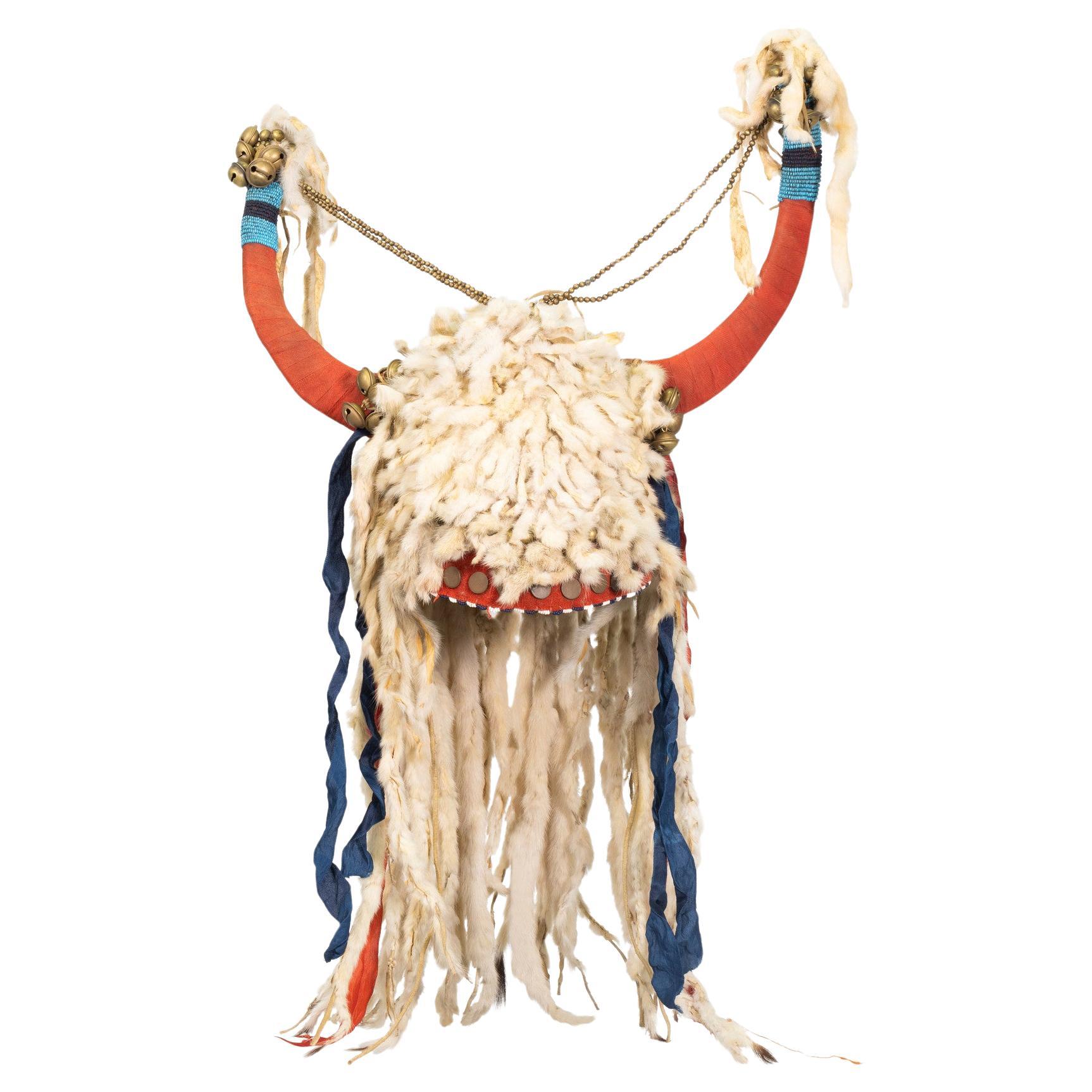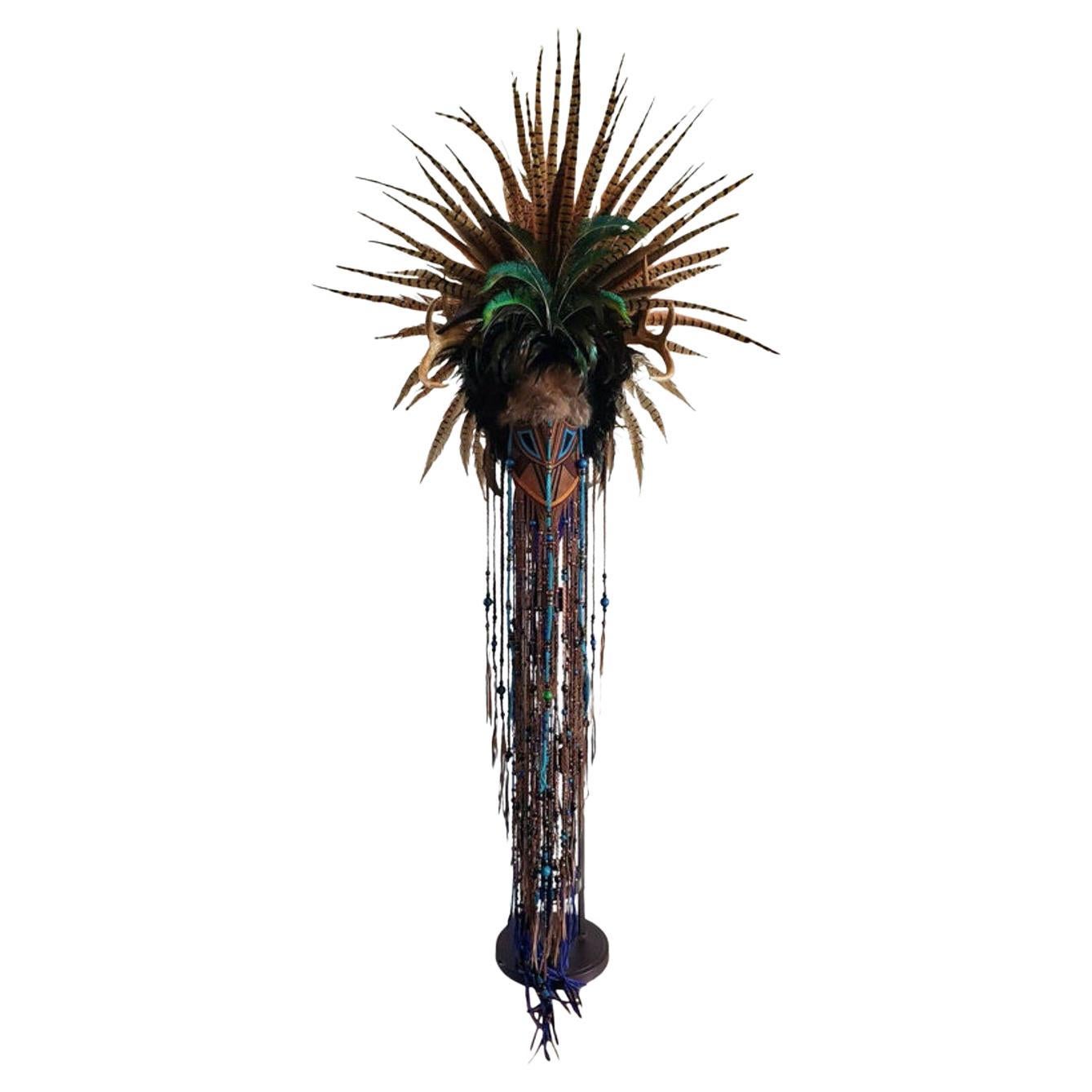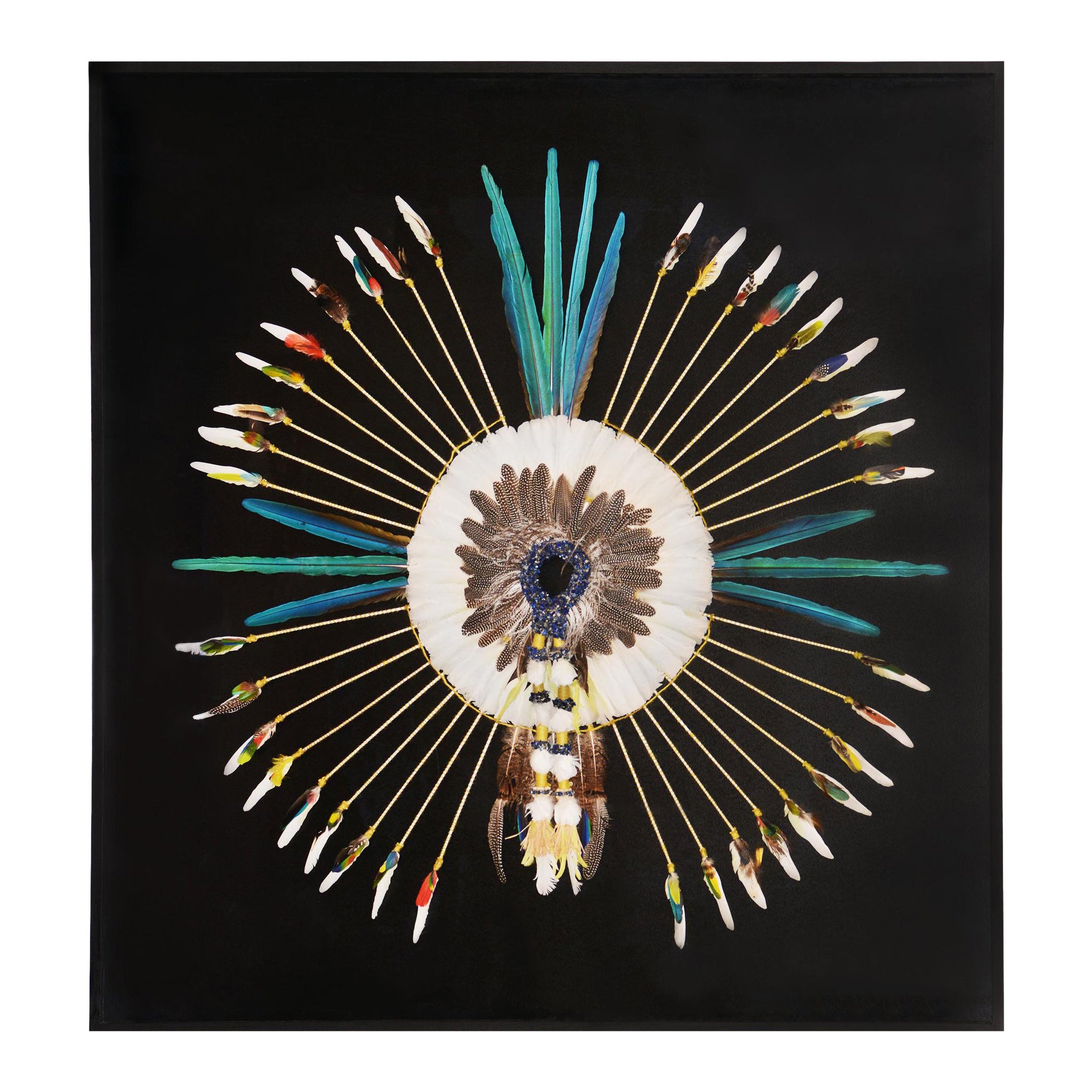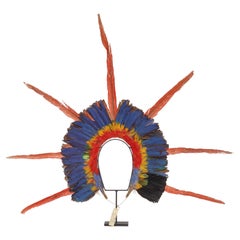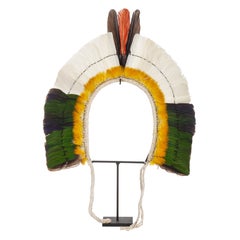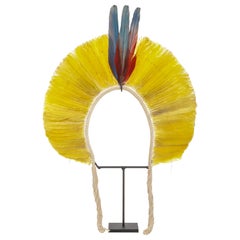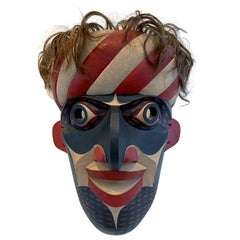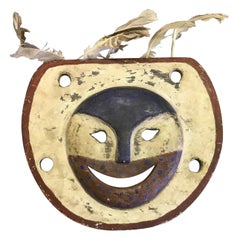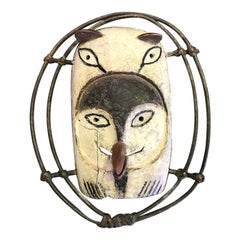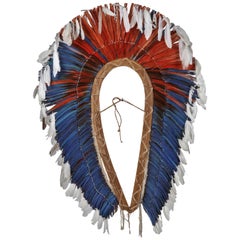
Kayapo-Xikrin Upé Long Hoop Feather Headdress, Akkati, Indigenous Brazil
View Similar Items
Want more images or videos?
Request additional images or videos from the seller
1 of 2
Kayapo-Xikrin Upé Long Hoop Feather Headdress, Akkati, Indigenous Brazil
$12,995.98List Price
About the Item
- Dimensions:Height: 39.77 in (101 cm)Width: 26.78 in (68 cm)Depth: 1.58 in (4 cm)
- Style:Native American (Of the Period)
- Materials and Techniques:
- Place of Origin:
- Period:
- Date of Manufacture:1930-1945
- Condition:Wear consistent with age and use.
- Seller Location:Amsterdam, NL
- Reference Number:1stDibs: LU5458220856902
About the Seller
5.0
Recognized Seller
These prestigious sellers are industry leaders and represent the highest echelon for item quality and design.
Established in 1985
1stDibs seller since 2020
23 sales on 1stDibs
Typical response time: 2 hours
Authenticity Guarantee
In the unlikely event there’s an issue with an item’s authenticity, contact us within 1 year for a full refund. DetailsMoney-Back Guarantee
If your item is not as described, is damaged in transit, or does not arrive, contact us within 7 days for a full refund. Details24-Hour Cancellation
You have a 24-hour grace period in which to reconsider your purchase, with no questions asked.Vetted Professional Sellers
Our world-class sellers must adhere to strict standards for service and quality, maintaining the integrity of our listings.Price-Match Guarantee
If you find that a seller listed the same item for a lower price elsewhere, we’ll match it.Trusted Global Delivery
Our best-in-class carrier network provides specialized shipping options worldwide, including custom delivery.More From This Seller
View AllA Kayapo Amazon Indigenous feather headdress
Located in Amsterdam, NL
Brazil, Pará, circa 1950s-1960s
H. 97 x W. 106 cm
Provenance:
Collection Rinck Hollnberger, Munich
(purchased in the 1980s)
Category
20th Century Brazilian Tribal Art
Materials
String, Feathers
An Amazon Indigenous Kayapo feather headdress
Located in Amsterdam, NL
Brazil, Pará or Mato Grosso, circa 1950’s-1960s
H. 50.8 x W. 33.5 cm (incl. stand)
Provenance:
Collection Rinck Hollnberger, Munich
(purchased in the 1980s)
Category
20th Century Brazilian Tribal Art
Materials
String, Feathers
An Amazon Indigenous Kayapo feather headdress
Located in Amsterdam, NL
Brazil, Pará or Mato Grosso, circa 1950’s-1960s
H. 55 x W. 38 cm (incl. stand)
Provenance:
Collection Rinck Hollnberger, Munich
(purchased in the 1980s)
Category
20th Century Brazilian Tribal Art
Materials
String, Feathers
Large Brazilian or Guyana Amazon Indigenous Macana War Club, 18th or Earlier
Located in Amsterdam, NL
A splendid and rare Amazon indigenous wamara wood Macana war-club
Southern-Guyana or Northern Brazil, Wapitxana group of the Aruak peoples, 18th century, possibly earlier
Measure: H. 43 cm
The deep patina of the club present, and the residue on the part where it was held, attest to its great age.
This unusually large Macana is decorated with several incised whitened anthropomorphic and human figures, a decoration only found on one other documented club in the British Museum, which is illustrated in: Hjalmar Stolpe, Amazon Indian...
Category
Antique Early 18th Century Brazilian Native American Objects
Materials
Hardwood
American Diorama, Follower Gerrit Schouten, Carib Indigenous Village
Located in Amsterdam, NL
Follower of Gerrit Schouten (second half of the 19th century)
Diorama depicting a Carib Indigenous camp
Carved wood, papier-mâché, paint on paper...
Category
Antique 19th Century Surinamer Native American Objects
Materials
Clay, Twig, Wood, Paper, Feathers
Exceptional Surinam-Themed Amsterdam Long-Case Clock
Located in Amsterdam, NL
A Surinam-themed Amsterdam long-case clock
The Netherlands, 1746-1756, dial signed Nicolaas Weylandt/Amsterdam
The case of the clock is made of Rio palisander veneer and snakewood, with the arch showing a painted scene of the harbour of Paramaribo, Fort Zeelandia and Dutch ships in anchorage, the spandrels decorated with figural representations of the four continents, the centre of the dial painted with Mercury, the god of trade, seated on a bale signed VCS (Vereenigde Compagnie Suriname), and one of the barrels bearing the initials “RBS,” on the left the river god of the Surinam river, with a Dutch three-master in the background.
Measures: H 259 x W 60 x D 35 cm (case)
Diameter 32 cm (clock dial)
This exceptionally rare long-case clock probably was ordered by one of the many wealthy families living along the Amsterdam canals that owned or had shares in plantations in Surinam. It’s a successful marriage of
the work of an accomplished 18th century Amsterdam clockmaker, a Dutch cabinetmaker working with exotic tropical timbers, a woodcarver familiar with both Dutch Rococo design and Surinamese iconography, and
a painter with knowledge, whether first-
hand or through other visualisations, of the Paramaribo waterfront. In the production of this Gesamtkunstwerk, only the name of the clockmaker is known: Nicloaas Weylandt (circa 1700-1754), who had a business situated on the Nieuwendijk near the Haarlemmersluis in Amsterdam from 1742 until his death.
The case is made of imported timbers from Surinam; Rio-palisander and snakewood. A very similar clock-case, veneered in walnut,
is illustrated in J. Zeeman, De Nederlandse staande klok...
Category
Antique Mid-18th Century Dutch Dutch Colonial Grandfather Clocks and Lon...
Materials
Palisander
You May Also Like
Carved Tribal Mask from Pacific Northwest Coast by David Frankel
Located in Atlanta, GA
A striking carved and painted mask in the tradition of the Native Indian tribes from Pacific Northwest Coast by David Frankel in 1994. The mask...
Category
1990s American Native American Masks
Materials
Natural Fiber, Wood
Yupik Yup'ik Native American Alaska Polychrome Wood Anthropomorphic Spirit Mask
Located in Studio City, CA
A beautiful, somewhat benevolent mask by the Yup'ik (Yupik) aboriginal, indigenous people of South-Western & South Central Alaska. The Yup'ik people, who are related to the Inuit peo...
Category
20th Century American Masks
Materials
Wood, Paint
Yupik Yup'ik Native American Alaska Carved Polychrome Wood Anthropomorphic Mask
Located in Studio City, CA
A fantastic and somewhat playful mask by the Yup'ik (Yupik) aboriginal, indigenous people of South-Western & South Central Alaska. The Yup'ik people, who are related to the Inuit peoples, have a long history of ceremonial mask making. Yup'ik masks were originally and specifically designed by Shamans and made to be worn by these spiritual leaders in Winter tribal dances and sacred ceremonies. Traditionally, the masks were destroyed or discarded after use in these ceremonies. Very few of these masks survived. After Christian contact in the late 19th century, masked dancing was suppressed and the tradition all but died out. As more outsiders settled in Alaska at the turn of the century, masks were made by the Yup'ik people to sell or trade for necessary goods. It is likely that this mask was created some years later for this purpose.
In the 20th century, Yup'ik mask had a profound influence on many renowned surrealist artists including, Max Ernst, Joan Miro, Leonora Carrington, Victor Brauner, and most notably Andre Breton who was an avid collector of Yup'ik masks.
This fantastic anthropomorphic mask is carved of lighter wood, hand painted and decorated with pigment, and held together with natural fiber. The mask seems to represent some sort of smiling, benevolent spirit or character with its four eyes, bird beak, and cat-like ears.
The mask is from a French collection. We were told that this mask, as well as others in the collection we have listed, was acquired originally in the 1950s-1960s in Alaska and the Yukon territory in Canada but as we have no way to verify or authenticate this. Please note we are listing the masks as decorative and not as actual tribal artifacts...
Category
20th Century American Masks
Materials
Natural Fiber, Wood, Paint
Yupik Yup'ik Native American Alaska Carved Polychrome Wood Anthropomorphic Mask
Located in Studio City, CA
A fantastic and somewhat grotesquely strange mask by the Yup'ik (Yupik) aboriginal, indigenous people of South-Western & South Central Alaska. The Yup'ik people, who are related to t...
Category
20th Century American Masks
Materials
Natural Fiber, Wood, Paint
Yupik Yup'ik Native American Alaska Polychrome Wood Anthropomorphic Spirit Mask
Located in Studio City, CA
A fantastic, somewhat sinister appearing mask by the Yup'ik (Yupik) aboriginal, indigenous people of South-Western & South Central Alaska. The Yup'ik people, who are related to the I...
Category
20th Century American Masks
Materials
Wood, Paint
Yupik Yup'ik Native American Alaska Polychrome Wood Anthropomorphic Spirit Mask
Located in Studio City, CA
A beautiful, somewhat benevolent mask by the Yup'ik (Yupik) aboriginal, indigenous people of South-Western & South Central Alaska. The Yup'ik people, who are related to the Inuit peoples, have a long history of ceremonial mask making. Yup'ik masks were originally and specifically designed by Shamans and made to be worn by these spiritual leaders in Winter tribal dances and sacred ceremonies. Traditionally, the masks were destroyed or discarded after use in these ceremonies. Very few of these masks survived. After Christian contact in the late 19th century, masked dancing was suppressed and the tradition all but died out. As more outsiders settled in Alaska at the turn of the century, masks were made by the Yup'ik people to sell or trade for necessary goods. It is likely that this mask was created some years later for this purpose.
In the 20th century, Yup'ik mask had a profound influence on many renowned surrealist artists including, Max Ernst, Joan Miro, Leonora Carrington, Victor Brauner, and most notably Andre Breton who was an avid collector of Yup'ik masks.
This fantastic anthropomorphic mask is carved of lighter wood and hand painted/ decorated with pigment. The mask seems to represent some sort of smiling, benevolent spirit or character.
The mask is from a French collection. We were told that this mask, as well as others in the collection we have listed, was acquired originally in the 1950s-1960s in Alaska and the Yukon territory in Canada but as we have no way to verify or authenticate this. Please note we are listing the masks as decorative and not as actual tribal artifacts...
Category
20th Century American Masks
Materials
Wood, Paint
Recently Viewed
View AllMore Ways To Browse
Split Cane
Brazilian Rattan Furniture
Blue Macaw
Brazilian Masks
Brazil Feather Headdress
Brazil Headdress
Amazon Headdress
Kayapo Headdress
Antique Wood Mask
Wooden Carved Masks
Ceremonial Mask
Vintage Wood Masks
Masquerade Mask
Indonesia Mask
Mask Wood Indonesian
Vintage Tribal Mask
Vintage Carnival Mask
Papier Mache Mask
